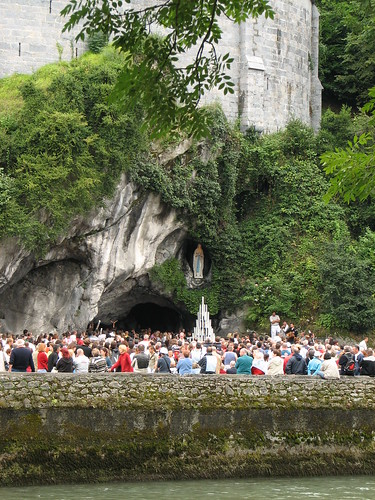
What’s that I smell? Is it Madonna of the Toast burning? I don’t know what it is exactly, but something is in the air. I’ve been noticing more and more media outlets devoting time to the ideas behind the stories I’ve been relaying to you for a while now. Scroll down and see the last two, or just chew on this one from the venerable Financial Times.
The story puts into perspective sightings of the Virgin Mary in Lourdes, France, back in 1858. Writer Matthew Engel uses that sighting and the hordes of visitors who have since made the pilgrimage to Lourdes (a city with more hotel rooms, according to the article, than any other French city aside from Paris) to examine the city’s immense popularity as a Christian tourist trap in light of Christianity’s decline in popularity. Now, while a ghostly sighting of a holy figure is slightly out of the Madonna of the Toast image on an object realm, the two are certainly related, like cousins.
Jesus or the Virgin Mary are seen and people flock. It is the aftermath of a vision, whether seen by only one person or hundreds that gawk at a rock or telephone pole, that is the story. Engel really makes a great point on why people do flock, even as Christianity looses much of its congregation because of controversy and generational shifts:
The faithful have become almost as marginalised as the sick. Yet here piety is not freakish or eccentric. . . . Here their faith can be reaffirmed, whether or not they feel cured, whether or not they feel the presence of the Mother of God. This is not a place of ageing priests and tiny congregations, not a place where Catholicism feels emaciated, apologetic or irrelevant. Here it is the Church Triumphant. As it once was right across Europe.
Engel is spot-on with this assessment. I have a tendency to frame these stories with media and technology, making the religious aspect of them secondary (though I think the media does very much secularize the stories, which is part of my interest). This article firmly roots these occurrences back in their source and for that it is well worth the read.



No comments:
Post a Comment